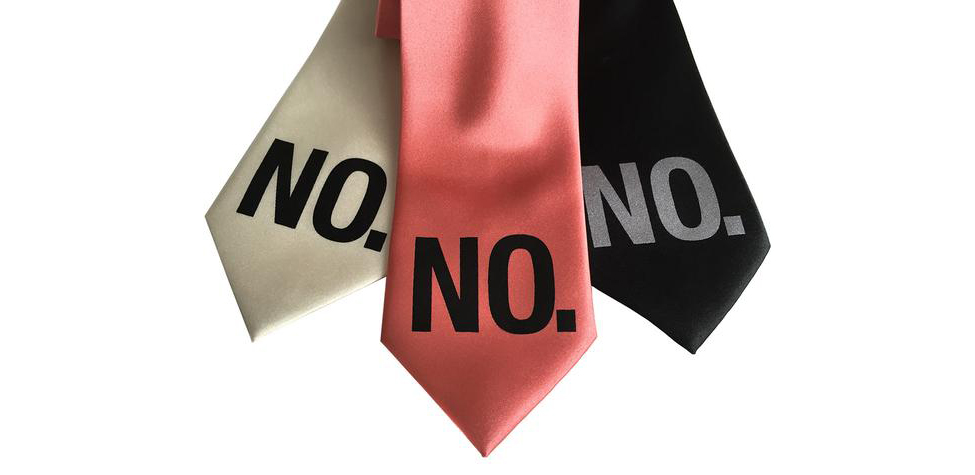
Each day, millions of people around the world wake up, get ready for work and nearly kill themselves in the process. Sadly, for most professionals, the difference between life and death depends only on forearm strength. Don’t pull hard enough and you come off looking like a slob; pull too hard and it’s lights out forever. That is why I believe that neckties are a menace and they must be stopped.
I count myself amongst the lucky ones. I wear a tie five days a week, and somehow I’ve managed to survive, but only by the skin of my teeth. I cinch my knot to the exact point that it looks tight, but doesn’t feel too tight. Then I spend the next 8–12 hours alternately tightening my tie and gasping for air. To me, wearing a tie is like having a small baby with silk mittens strangle you with every ounce of his being throughout the day.
Who do we have to blame for these silken monstrosities? As Americans, our natural inclination is to point the finger at the French for anything we don’t like, and in this case, that sentiment would be mostly correct. Like all great fashion trends, the necktie was stolen from the streets; the streets in this case being the Croatian mercenaries in service with the French military during the first half of the 1600s. These Croatian mercenaries wore small knotted neckerchiefs and the fashionistas in Paris thought it was c’est chic. The love affair with the necktie caught on around Europe from there and, much to my chagrin, continues still to this day.
While ties have certainly had staying power, some things about them have changed over the years. Like past contestants of The Biggest Loser, neckties have gone from fat to skinny to fat again only to settle somewhere in between and then go skinny again. They’ve been square and pointy, striped and patterned, and some were even festooned with hand-painted pictures of pin-up girls. In the 1930s, men wore their ties short to make their hiked-up pants look less foolish.
There are almost as many styles as there are different ways to tie a necktie. I think tying is the most infuriating thing about ties. We don’t have more than one way to wear our pants, so why do we need 600 different ways to tie a tie? I shouldn’t need to be an Eagle Scout to put on my damn clothes, after all.
Eventually that same sentiment led to a necktie tying revolt, giving us the clip-on system enjoyed by children and childish adults around the world. Though more comfortable and easier to put on, the clip-on tie just never took off on as massive a scale as its big brother. It may have been the clip-on tie’s obvious fakeness due to its lack of a neck or perhaps it was just the elitism of the real tie wearing professionals that refused to accept these tie frauds. Whatever the cause, clip-on ties were deemed uncool and continue to be to this day.
Do you know what else is not cool about ties? They are always in the way. They flop on the table like a dead fish when you get too close. They get in your soup at lunch and slap you in the face when it’s windy. They hang dangerously close to the water in the toilet when you sit down to take a shit. Some people tuck their ties in their shirt or throw them over their shoulder to avoid such tragedies, but then you forget and you walk around looking like an asshole. That’s why they make tie tacks and why you should get some if you must wear ties on a regular basis.
Ties are a pain in the ass and they make everyone that wears them uptight. Have you ever noticed that depictions of utopian futures in film often show people in flowing robes and gowns living in peace and harmony? None of the characters in those movies are wearing neckties, and I think that is what makes all the difference.
In the future, maybe we will be enlightened enough to see the truth, just like in the movies. Perhaps someday we will realize that tying small bits of fabric around our necks just doesn’t make sense. It only serves to agitate us and put us at odds with one another. To truly find peace, we must free ourselves from these self-imposed leashes and protect our goddamn necks.


Comments